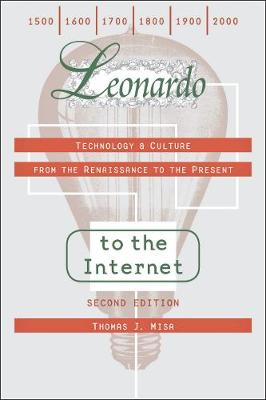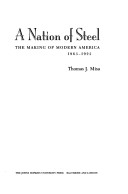Johns Hopkins Studies in the History of Technology
3 total works
Since 2000, the National Science Foundation has depended upon its pioneering FastLane e-government system to manage grant applications, peer reviews, and reporting. In this behind-the-scenes account Thomas J. Misa and Jeffrey R. Yost examine how powerful forces of science and computing came together to create this influential grant-management system, assessing its impact on cutting-edge scientific research. Why did the NSF create FastLane, and how did it anticipate the development of web-based e-commerce? What technical challenges did the glitch-prone early system present? Did the switch to electronic grant proposals disadvantage universities with fewer resources? And how did the scientific community help shape FastLane? Foregrounding the experience of computer users, the book draws on hundreds of interviews with scientific researchers, sponsored project administrators, NSF staff, and software designers, developers, and managers.
Historian Thomas J. Misa's sweeping history of the relationship between technology and society over the past 500 years reveals how technological innovations have shaped-and have been shaped by-the cultures in which they arose. Spanning the preindustrial past, the age of scientific, political, and industrial revolutions, as well as the more recent eras of imperialism, modernism, and global security, this compelling work evaluates what Misa calls "the question of technology." Misa brings his acclaimed text up to date by examining how today's unsustainable energy systems, insecure information networks, and vulnerable global shipping have helped foster geopolitical risks and instability. A masterful analysis of how technology and culture have influenced each other over five centuries, Leonardo to the Internet frames a history that illuminates modern-day problems and prospects faced by our technology-dependent world
From the age of railroads through the building of the first battleships, from the first skyscrapers to the dawning of the age of the automobile, steelmakers proved central to American industry, building, and transportation. In 'A Nation of Steel' Thomas Misa explores the complex interactions between steelmaking and the rise of the industries that have characterized modern America. Misa begins by showing how the transcontinental railroads' unprecedented demand for massive quantities of steel rails in the 1870s and 1880s led to the production of high-volume but low-quality Bessemer steel, and how that development influenced the American steel industry to this day. He describes how urbanization, including new building codes, led to changes in steel production that made possible the first American skyscrapers. And he explains why steel armor plate for battleships came to cost fifteen times more per ton than steel for rails, and how that discrepancy made Carnegie and Bethlehem the industry's leading companies.
Subsequent chapters describe the increasing role played by the new science of metallurgy; the link between the invention of high-speed tool steel and the "efficiency craze"; and how demands of the automobile makers for a novel, high-tech consumer product gave rise to production of large volumes of high-quality steel. 'A Nation ofSteel' offers a detailed and fascinating look at an industry that has had a profound impact on American life.
Subsequent chapters describe the increasing role played by the new science of metallurgy; the link between the invention of high-speed tool steel and the "efficiency craze"; and how demands of the automobile makers for a novel, high-tech consumer product gave rise to production of large volumes of high-quality steel. 'A Nation ofSteel' offers a detailed and fascinating look at an industry that has had a profound impact on American life.


